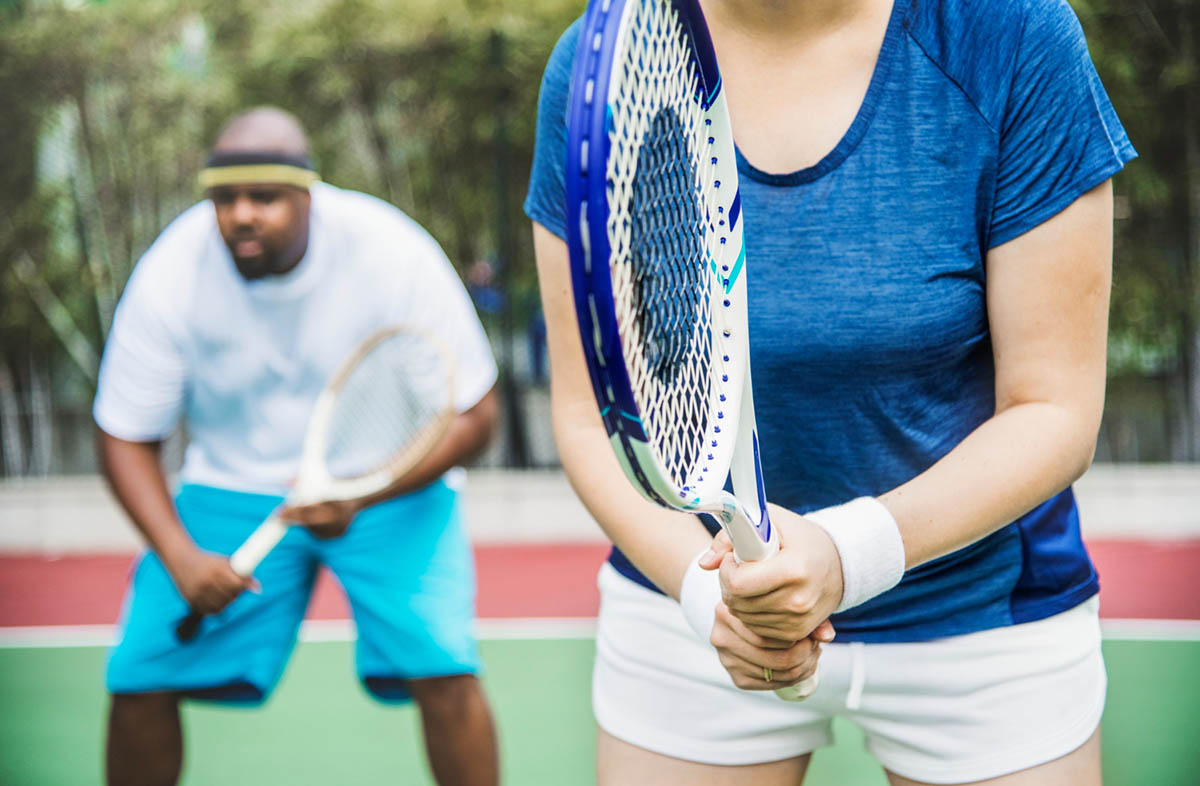Elbow pain is common for many athletes and those engaged in repetitive activities. Whether you’re an avid tennis player, a dedicated golfer, or simply someone who performs repetitive tasks, elbow pain can significantly impact your quality of life. This article differentiates between two common elbow conditions: Tennis Elbow vs Golf Elbow. Understanding these conditions is crucial for effective medical care and prevention.
Tennis Elbow vs Golfer’s Elbow
While Tennis vs Golf Elbow are forms of tendinitis that affect the elbow, they target different muscle groups and areas of the elbow joint. Tennis Elbow, or lateral epicondylitis, results from overuse of the wrist extensors and forearm muscles, typically on the outer elbow bone. In contrast, Golfer’s Elbow vs Tennis Elbow affects the inner side of the elbow and involves damage to the wrist flexors used for gripping and swinging.
What is Tennis Elbow?
Tennis Elbow, clinically referred to as lateral epicondylitis, is a condition marked by the tennis elbow’s pain in the elbow’s outer region. This ailment is estimated to affect 1–3% of the adult population annually and is more prevalent in the dominant arm. Primarily considered an overuse injury, it results from repetitive wrist movements against resistance, although it can also develop from a direct blow to the lateral elbow. Approximately 50% of tennis players experience symptoms, often stemming from factors such as improper swing technique and the use of heavy racquets. This condition is common among workers who frequently use heavy tools or partake in repetitive gripping and lifting activities. The pain is attributed to inflammation of the tendons connecting to the lateral epicondyle, which is the bony prominence on the outer elbow.
Common Causes of Tennis Elbow
Tennis Elbow is often caused by overuse of the wrist extensors and tendons. Repeated motions like those in tennis strokes can strain the tendons, leading to microtears and inflammation. However, it’s not limited to tennis players. Activities like painting, plumbing, and even extensive computer use can contribute to developing this condition due to poor techniques or improper lifting.
Can You Get Tennis Elbow from Playing Golf?
While Tennis Elbow is named after the sport, it is not exclusive to tennis players. Golfers can also develop this condition, especially if they use improper techniques or have a weakened grip on the club. The repetitive motion of swinging a golf club can put similar stress on the elbow, especially with a poor grip size.
Symptoms of Tennis Elbow
Symptoms of Tennis Elbow typically consist of lateral elbow pain and tenderness on the outer side of the elbow, which can intensify during forceful activities or lifting. Individuals may also experience weakness in the arm muscles, and discomfort may radiate toward the forearm.
What is Golfer’s Elbow?

Golfer’s Elbow, clinically referred to as medial epicondylitis, is a condition marked by pain on the inner side of the elbow. This rare ailment affects less than 1% of the general population. It predominantly impacts individuals aged 45 to 64, with a higher incidence among women than men, and often arises from activities involving repetitive movements. Notably, around 90% of cases arise from everyday activities rather than traditional sports. This condition results from inflammation of the tendons that connect to the medial epicondyle, the bony prominence found on the inner elbow.
Common Causes of Golfer’s Elbow
Golfer’s Elbow is primarily caused by overuse of the wrist flexors and tendons that control wrist movements. Repetitive motions, such as those in golf swings, weightlifting, or throwing sports, can lead to this condition. Rock climbers and other athletes involved in throwing-related sports are also at risk. Unlike the Tennis Elbow, the Golfer’s Elbow affects the inner part of the elbow.
Can You Get Golfer’s Elbow from Playing Tennis?
Although Golfer’s Elbow is not directly related to tennis, the condition can still occur in tennis players, particularly when they use improper technique or have a weakened grip. Tennis Elbow is more commonly associated with tennis due to the nature of the tennis racket and repetitive movements.
Symptoms of Golfer’s Elbow
Symptoms of Golfer’s Elbow encompass medial elbow pain and tenderness on the inner side of the elbow, which often worsens during activities that involve wrist flexion or gripping. Individuals may also experience stiffness and weakness in the elbow, with discomfort that can radiate down the forearm. Simple stretches and gentle stretches may help alleviate some symptoms.
How to Diagnose Tennis Elbow and Golfer’s Elbow
Accurate diagnosis of Tennis Elbow and Golfer’s Elbow involves a combination of medical history, physical examination, and sometimes imaging tests like MRI. A healthcare provider will assess symptoms, perform a physical exam, and evaluate the affected arm’s range of motion and strength. A healthcare provider will assess symptoms, perform physical tests to identify pain points, and evaluate the affected arm’s range of motion and strength.
Key Differences Between Tennis Elbow vs Golfer’s Elbow
Tennis Elbow primarily affects the outer elbow bone, resulting in pain and tenderness due to inflammation of the tendons that connect to the lateral epicondyle. In contrast, Golfer’s Elbow targets the inner elbow bone, causing similar discomfort from inflammation of the tendons associated with the medial epicondyle.
Location of Pain and Inflammation:
The Tennis Elbow presents pain on the outer part of the elbow, whereas the Golfer’s Elbow is noted for discomfort on the inner side of the elbow. Both conditions involve tendon inflammation but affect different areas of the elbow joint.
Affected Tendon:
Tennis Elbow involves the extensor tendons that connect to the lateral epicondyle of the elbow. In contrast, Golfer’s Elbow affects the flexor tendons attached to the medial epicondyle.
Symptoms and Sensations:
Tennis Elbow is characterized by pain during gripping, forearm weakness, and tenderness on the outer elbow. In contrast, a Golfer’s Elbow presents pain during wrist flexion, stiffness, and tenderness in the inner elbow.
What Are Tennis Elbow and Golfer’s Elbow Long-Term Effects?
If left untreated, Tennis Elbow and Golfer’s Elbow can lead to chronic pain and reduced range of motion. Persistent symptoms may impact favorite activities and athletic performance, potentially leading to chronic elbow pain and ongoing discomfort. Long-term effects include persistent inflammation, weakening of the affected tendons, and ongoing discomfort.
Treatment for Tennis Elbow and Golfer’s Elbow
Effective treatment for Tennis Elbow and Golfer’s Elbow typically involves several strategies to alleviate pain and promote healing. Austin physical therapy can provide tailored interventions to aid in recovery. Initially, rest and modification of activities that trigger discomfort are crucial. Ice packs can help reduce inflammation, while physical therapy focuses on specific exercises to strengthen and stretch the affected muscles and tendons. In addition, the use of nonsteroidal anti-inflammatory drugs (NSAIDs) may be recommended to manage pain and swelling. Braces or forearm straps can also minimize strain on the involved tendons, providing additional support during recovery.
Austin Manual Therapy Associates specializes in providing physical therapy for Tennis Elbow and Golfer’s Elbow. Our expert team can tailor a rehabilitation program to address your specific needs, helping to alleviate pain and restore function.
Prevention Strategy to Avoid Both Conditions
Several strategies are essential to prevent Tennis Elbow and Golfer’s Elbow. Firstly, employing proper form during sports and activities helps minimize strain on the elbow. Secondly, strengthening exercises, such as wrist strengthening, are crucial for building resilience in the elbow muscles supporting the tendons. Additionally, incorporating flexibility exercises through regular gentle stretches can maintain elasticity and reduce the risk of injury. Additionally, incorporating flexibility exercises through regular stretching can maintain elasticity and reduce the risk of injury. Finally, making ergonomic adjustments, such as using appropriate equipment and tools, can significantly lessen strain on the elbow during daily tasks.
Struggling with Tennis or Golfer’s Elbow? Discover How Austin Manual Therapy Can Help

If you’re struggling with Tennis Elbow or Golfer’s Elbow, don’t let pain hold you back. Austin Manual Therapy Associates offers specialized physical therapy to address and rehabilitate elbow conditions. Our team of experts is dedicated to providing healthcare services and physical therapy exercises tailored to your specific needs.
Conclusion
Understanding the difference between Golfer’s Elbow and Tennis Elbow is crucial for effective treatment and prevention. While both conditions are similar in some ways, they have distinct characteristics and require tailored approaches to management, including orthopedic care and physical activity. Whether you’re an athlete or experiencing elbow pain due to repetitive activities, seeking proper diagnosis and treatment is key to recovery.
FAQ’S
How do I know if I have tennis or golfer’s elbow?
Diagnosis typically involves assessing the location of pain and symptoms. Tennis elbow causes lateral elbow pain, while Golfer’s Elbow affects medial elbow pain. Consulting healthcare professionals is essential for an accurate diagnosis.
Is tennis and golf elbow the same?
No, they are different conditions. The tennis Elbow involves the outer elbow and extensor carpi radialis brevis tendons, while the Golfer’s Elbow involves the inner elbow and wrist flexors.
Can I ignore tennis elbow?
Ignoring the Tennis Elbow can lead to chronic elbow pain and further complications. Early diagnosis and proper treatment are crucial for effective management and recovery.





